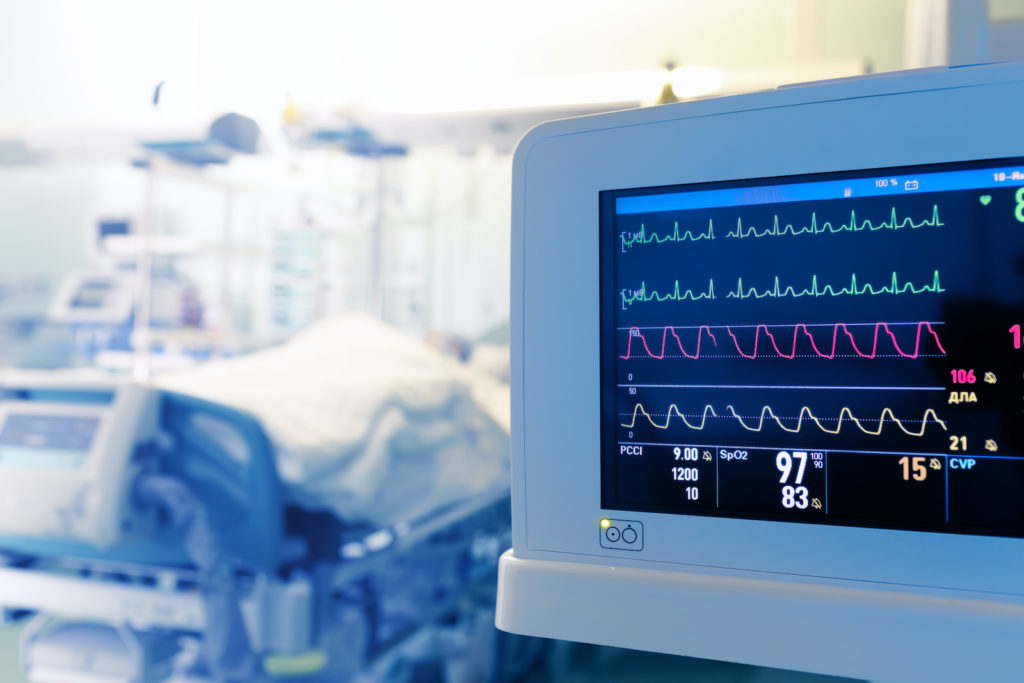Surge ICU Utilizing Sleep Centers & Remote Management of Home PAP Systems

Background
The disaster that is the COVID-19 pandemic has revealed the need for sweeping transformation of healthcare delivery. The present crisis is exposing some of the many deficiencies in our system. The concern over the lack of available ventilators and ICU beds/monitored hospital beds can be substantially alleviated by transitioning the presently empty sleep centers to fully functional ICU’s and the PAP systems can provide much of the functionality of ventilators.
Our equipment can be leveraged to modify existing floor beds to step down ICU capacity and to provide home therapy and monitoring of respiratory support as patients transition out of the hospital.
Equipment Availability and Utilization
Sleep technologists are trained in intensive monitoring of numerous physiologic parameters. This monitoring is more rigorous than the typical ICU monitoring in many areas. Certain monitoring techniques may be more challenging in the sleep center setting such as arterial pressure monitoring. With creative modification of the monitoring equipment, even these modalities can be incorporated.
More importantly, the positive pressure devices typically used in the sleep center setting are dramatically more powerful than the standard home CPAP systems. Many sleep centers have machines capable of a variety of ventilatory modes. The systems deployed in the Northport, Alabama DCH Sleep Center are Respiratory Assist Devices (RADs). They are designed for non-invasive ventilation. In most cases, this would be adequate for the management of the moderately ill patients.
The PAP systems typically used for home use can also be deployed in this crisis for creating surge stepdown ICU capability. Standard hospital rooms can be transformed into stepdown ICU level care simply by leveraging the technology at our disposal. These systems have extensive internal data collection and can be monitored and managed remotely. This data could be co-populated into a dashboard similar to the type that I have developed in the past to display and integrate numerous physiological parameters. This approach to medical data yields improved outcomes while shepherding resources.
Furthermore, during a crisis, patients transitioning out of the hospital could still be managed remotely and mildly ill patients could benefit from respiratory support at home with remote monitoring. This could lessen the strain on the inpatient programs while still allowing for fairly aggressive management.
The DCH Sleep Center has medical gasses and portable suction available. Most sleep centers have at least the basic medical gasses available and those without can utilize portable systems or concentrators.
Challenging times often call for non-traditional measures. Obviously, these approaches are neither preferable nor typical. There are numerous considerations such as aerosolization, negative pressure rooms, and cross-contamination which must be addressed. Contingency plans are being developed for each of these concerns. The conversion of sleep centers and sleep equipment is not intended to be equivalent to current ICU level care. It is however a superior option to no care at all for patients that need ventilatory support in a hospital with no remaining ventilators. We are very pleased to see that the FDA has granted the emergency use of sleep apnea equipment for emergency “ventilation” as we have suggested. Please note this needs to be carefully managed with a clear understanding of the technical differences between the various systems.
Staffing
The sleep center staff could be transitioned to a fully staffed ICU format or a stepdown format.
Several sleep technologists could easily manage the monitoring of a 12-bed laboratory.
Furthermore, the systems can be monitored and managed remotely by the physician so that on-site supervision of services can be provided by a small team. This would allow high intensity of service while not completely exhausting the staff providing the services.
Supervision of these systems requires extensive knowledge of the treatment and monitoring equipment, sleep medicine and critical care medicine. Once the system is operational the staffing can be supplemented by sleep and pulmonology physicians. Conversion of a center could be accomplished within 24 hours.
CNN Article – “A letter from a Michigan hospital system details who would get life-saving resources if equipment runs short during the coronavirus pandemic”
For more information and discussion, please feel free to contact us the editor@smartbusinessgreatmedicine.com or CMO@magicmedicalsolutions.com.


… [Trackback]
[…] Find More on that Topic: smartbusinessgreatmedicine.com/coping-with-covid-19/ […]